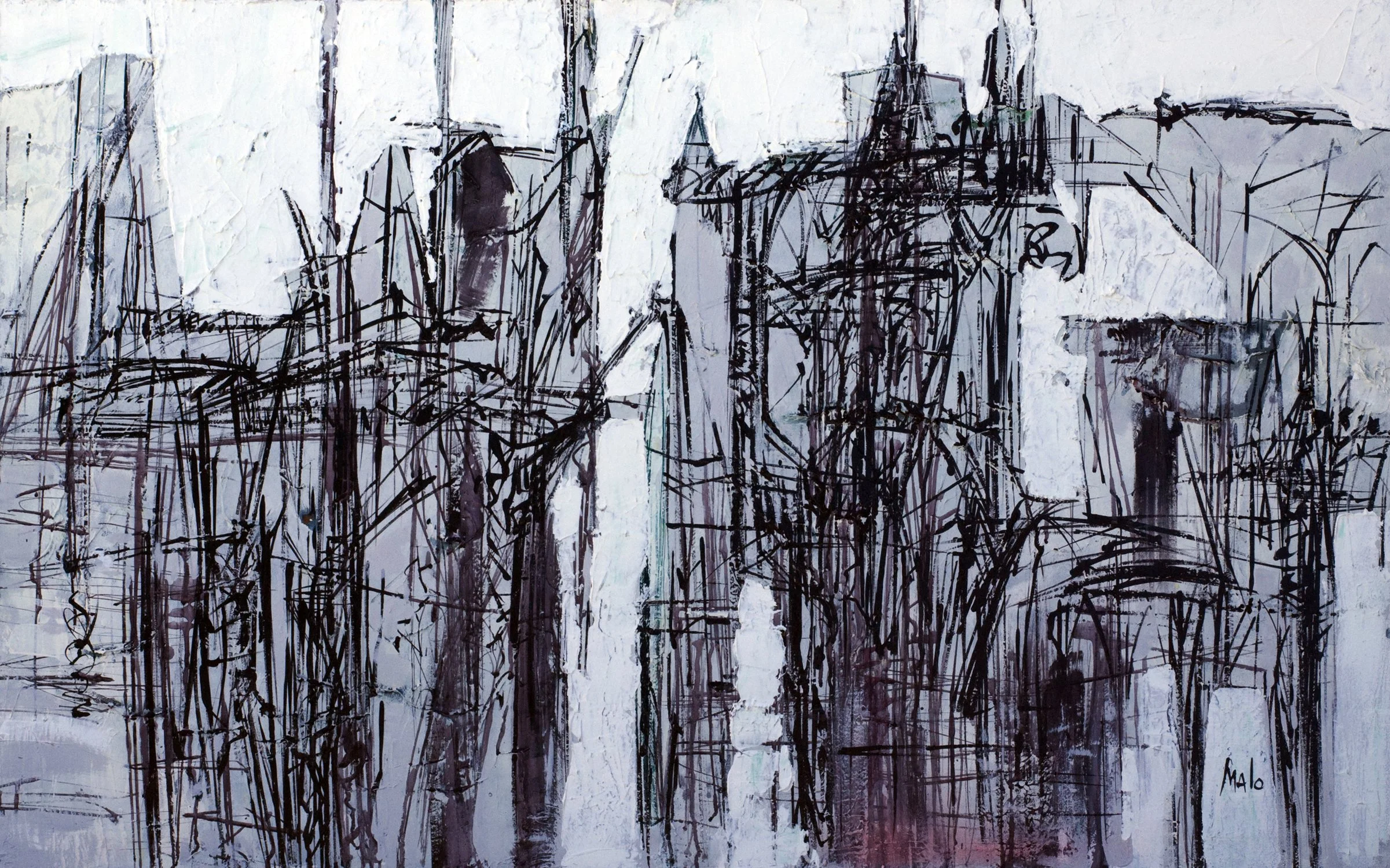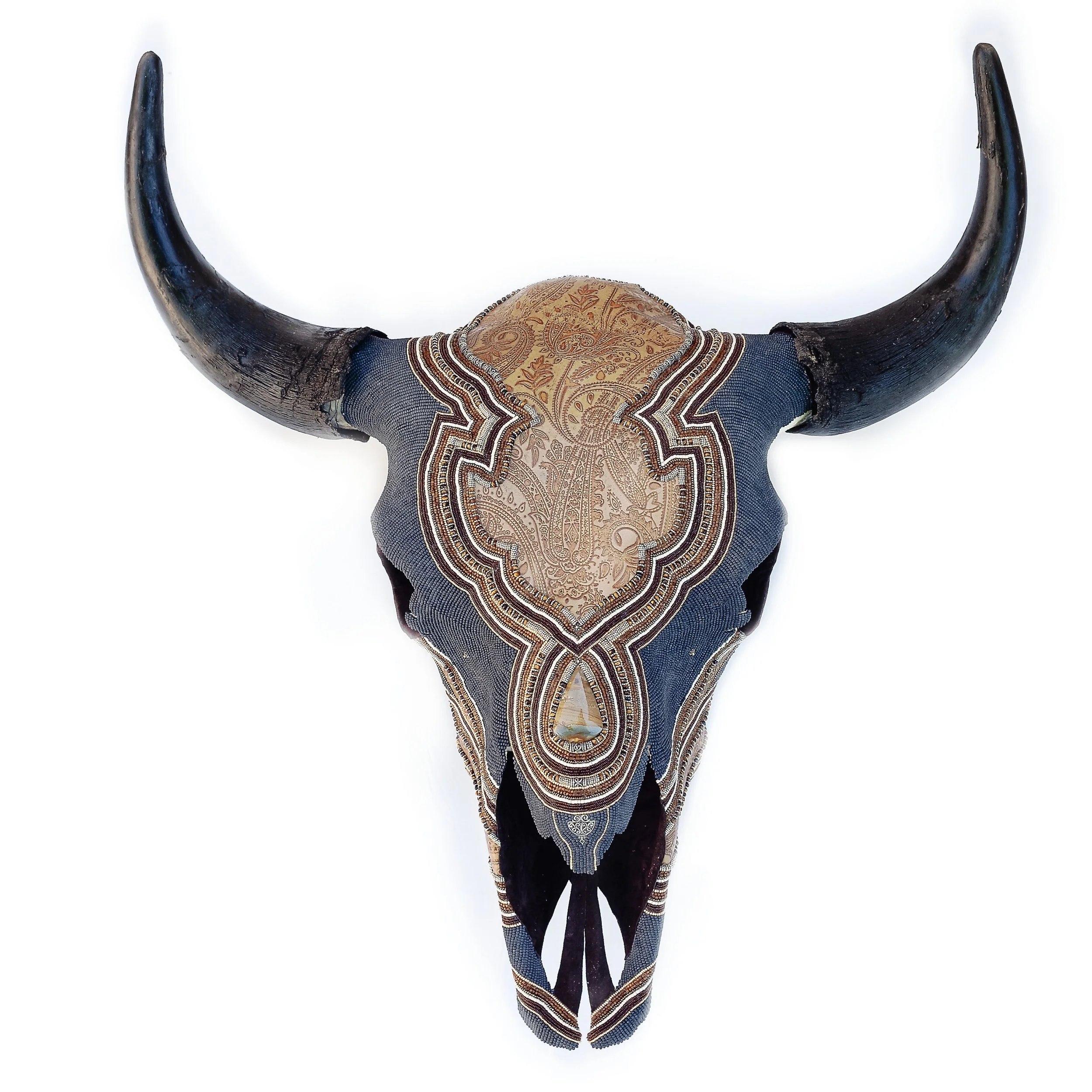France Malo
France Malo's artworks exude an unmistakable life energy and dynamics that engage the viewer in a deep and profound experience. Her canvases, vivid with movement and rich with textural complexity, speak to a certain kind of life philosophy that values vibrancy, change, and the power of nature.
In reviewing Malo's artworks, one cannot help but be struck by the palpable sense of life force that pulsates through each piece. The abstracted forms and lines seem to dance across the canvas, suggesting a fundamental connection between the artistic expression and the vitality of the living world. There is a suggestion of landscapes, not in the traditional sense of scenic vistas, but as emotive interpretations of how nature moves and evolves.
The dynamism present in Malo's art could be likened to the vigorous brushstrokes and richly textured surfaces of the old masters, such as the work of Rembrandt or the expressive force found in Turner's seascapes. Like these historical figures, Malo appears to explore the human condition, not through literal representation but through the emotive capacity of color, form, and the very act of paint application. Her canvases become a battleground of creation, much like the tumultuous scenes captured by the old masters in their most powerful works.
There is a philosophical depth to Malo's work that resonates with viewers. The idea that life is constantly in flux, always moving, always transforming, is present in her art. Her work does not merely depict this philosophy but embodies it; the fluidity of her medium reflects the transient nature of existence. Just as we cannot step into the same river twice, we cannot view Malo's work without a sense of time passing and the moment changing.
These paintings teach us to embrace change, to see beauty in the chaotic and the undefined. They remind us that our lives are not static images but dynamic, unfolding stories. Each brushstroke tells us that it's not just the endpoint that matters but the journey it took to get there. They encourage us to let go of our preconceived notions of form and structure, urging us to appreciate the spontaneous and the unexpected.
In terms of what this art offers viewers, Malo's paintings provide a space for contemplation and emotional exploration. They are less about providing answers and more about prompting questions. The frenetic energy within her works might inspire some to consider their own life's pace and the way they interact with the world around them. For others, the layers and textures might be a call to look beyond surfaces, to understand the complexities that underlie our everyday experiences.
Malo's art, with its intertwining lines and emerging forms, creates a sense of connection—a bridge between the viewer and the intangible qualities of the universe. It is this connection that imparts a profound sense of vitality to those who engage with her work. This is not passive art; it demands an active viewer, one who is willing to be moved both literally and figuratively.
Comparing Malo with the great old masters of painting, we see a shared bravado in the handling of their mediums and a common pursuit of capturing something beyond the mere physical world. Where the old masters might have been more concerned with religious and mythological themes, Malo's work feels decidedly contemporary, with an emphasis on inner landscapes and the abstract qualities of life itself.
France Malo's artworks offer a stirring visual dialogue about the essence of life. They offer the viewer a vivid portrayal of the life force, an abstract representation of our dynamic existence, and a philosophy that embraces transformation. The lessons these works offer are profound: to accept the perpetual motion of life, to find harmony in discord, and to see the grandeur in the gestural and the abstract. These are canvases that not only reflect the vibrancy of life but also celebrate its endless potential for change.
France Malo’s abstract art pulsates with an undeniable vitality and dynamics, reflecting a profound exploration of life’s inherent energy. Her canvases are theaters where the drama of existence plays out through vibrant colors, bold strokes, and a masterful layering of textures. Each piece resonates with a rhythm that seems to mirror the very pulse of life itself, inviting viewers to feel rather than simply observe.
The abstract nature of Malo’s work strips away the literal interpretations of the world around us and delves into the emotional and spiritual undercurrents that drive our existence. Her paintings do not replicate reality; they reinterpret it, transforming familiar landscapes into energetic arrays of color and form. This approach allows Malo to capture not the image of life but its essence, the unseen forces that move and shape us.
The dynamics in Malo’s art are further emphasized by her use of contrast—fluidity against structure, chaos against order. These juxtapositions act as metaphors for the dualities we navigate throughout our lives. Just as her abstract forms coalesce from a background of apparent disarray, so too can clarity arise from the complexities of our personal experiences.
Malo’s abstracts evoke a sense of motion. The lines and shapes in her compositions suggest trajectories and forces rather than static forms. It is as if the viewer is witnessing the very act of creation, a visual representation of growth, decay, and transformation. This sense of motion echoes the constant flux of the world, the incessant flow of time, and the ceaseless change that characterizes life.
Malo’s paintings offers a meditation on life's tempo. In some pieces, the swift strokes and hurried splatters may represent the rapid pace of modern existence. In others, the gentle blending and subtle gradations of color might speak to life’s quiet moments and the soft passage of time. Through her art, Malo seems to tell us that life, in all its forms, is a dynamic and ever-evolving dance, one that encompasses both the frenetic and the serene.
France Malo’s abstract art do more than capture the viewer's gaze; they capture the viewer's imagination. They beckon us to engage with the fundamental forces of existence and to consider our place within a larger, ever-changing cosmos. Her canvases become spaces where we can confront the vibrancy of life, feel its movements, and ultimately, find our own rhythm within the beautiful chaos.
France Malo, based on the artwork provided and without further context about her wider presence within the contemporary art scene, seems to reflect an artist deeply engaged with the abstract, expressionist, and perhaps even elements of the action painting tradition. Her placement within the art scene can be discussed in terms of her style, thematic content, and the artistic traditions she appears to draw upon.
Malo’s work, characterized by its vitality, movement, and bold abstraction, suggests an alignment with the legacy of abstract expressionism—a movement that prioritized the depiction of emotions over realistic images. This places her within a lineage of artists who see the canvas as an arena to express inner states, where the act of painting itself is a central aspect of the artwork's meaning.
Her dynamic compositions, which suggest energy and change, connect her to the wider movements in abstract art that emphasize process and experience. Artists like Jackson Pollock and Willem de Kooning, who were at the forefront of action painting, similarly used their canvases to record the energetic movement of their work. If Malo’s work is widely shown and recognized, she could be seen as continuing this tradition, though with a unique and contemporary voice.
In the current art scene, which is highly diversified, Malo would potentially find herself part of the niche of artists who continue to explore abstract art's potential in a post-digital age. In a time where conceptual art, digital media, and postmodern critique often dominate, her work is a reminder of the enduring power of paint and the artist’s hand.
By Marta Puig
Editor Contemporary Art Curator Magazine











